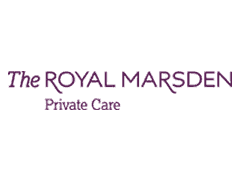Person-based advertising and Account-Based Marketing (ABM) are both strategies that focus on targeting specific audiences, but they differ in their approach and scope. Here’s a comparison of the two:
Person-Based Advertising:
- Focus: Person-based advertising targets individual consumers or users. It aims to deliver personalized content and advertisements to specific individuals based on their behaviour, preferences, and demographics.
- Data Utilization: It heavily relies on collecting and analysing individual customer data. This data is used to create detailed customer profiles, enabling personalized advertising campaigns. Person-Based Advertising Platforms such as Influ2 can help with this by pulling data from multiple sources and presenting in easy to read dashboards.
- Channels: Person-based advertising can be executed across various channels, including social media, email, websites, mobile apps, and more. The goal is to engage individuals wherever they interact with the brand.
- Personalization: The emphasis is on creating highly personalized content and experiences for individual users. The messaging is tailored to address the specific needs and interests of each person.
- Use Cases: Person-based advertising is commonly used in B2C (business-to-consumer) marketing where the target audience is individual consumers.
Account-Based Marketing (ABM):
- Focus: ABM targets entire companies or organizations rather than individual persons. It involves creating customised marketing strategies for specific target accounts or high-value clients.
- Data Utilization: While individual data might still be used within an organization, the primary focus is on understanding the needs and characteristics of the targeted businesses or accounts. A CRM with account-based structure is essential – such as HubSpot or Salesforce. Popular analysis tools for this include 6Sense, DemandbaseOne, and LeanData.
- Channels: ABM campaigns are typically executed across various channels, including personalized emails, targeted social media ads, direct mail, and events. The goal is to engage the entire decision-making unit within the targeted accounts.
- Personalization: ABM campaigns are highly personalized but at the company level. Content and messaging are tailored to address the challenges and objectives of the target accounts.
- Use Cases: ABM is commonly used in B2B (business-to-business) marketing, especially in industries where the sales cycle is long and involves multiple decision-makers within a company.
Key Differences:
- Scope: Person-based advertising focuses on individuals, while ABM targets entire organizations or accounts.
- Personalization Level: Person-based advertising achieves high personalization at the individual level, whereas ABM achieves personalization at the company or account level.
- Target Audience: Person-based advertising is suitable for businesses targeting a broad consumer audience, while ABM is ideal for businesses with a select group of high-value clients or target accounts.
- Data Usage: While both strategies utilize data, person-based advertising relies on individual customer data, while ABM focuses on understanding the business needs of specific companies.
In practice, some businesses might employ a combination of both strategies based on their target audience and marketing objectives.
For instance, when ExtraDigital sets up campaigns for a B2B company we might recommend ABM to target specific businesses while also suggesting person-based advertising to engage with individual decision-makers within those organizations.
So it is possible and often best to use both ABM (Account Based Marketing) and Person-based advertising with one business.










